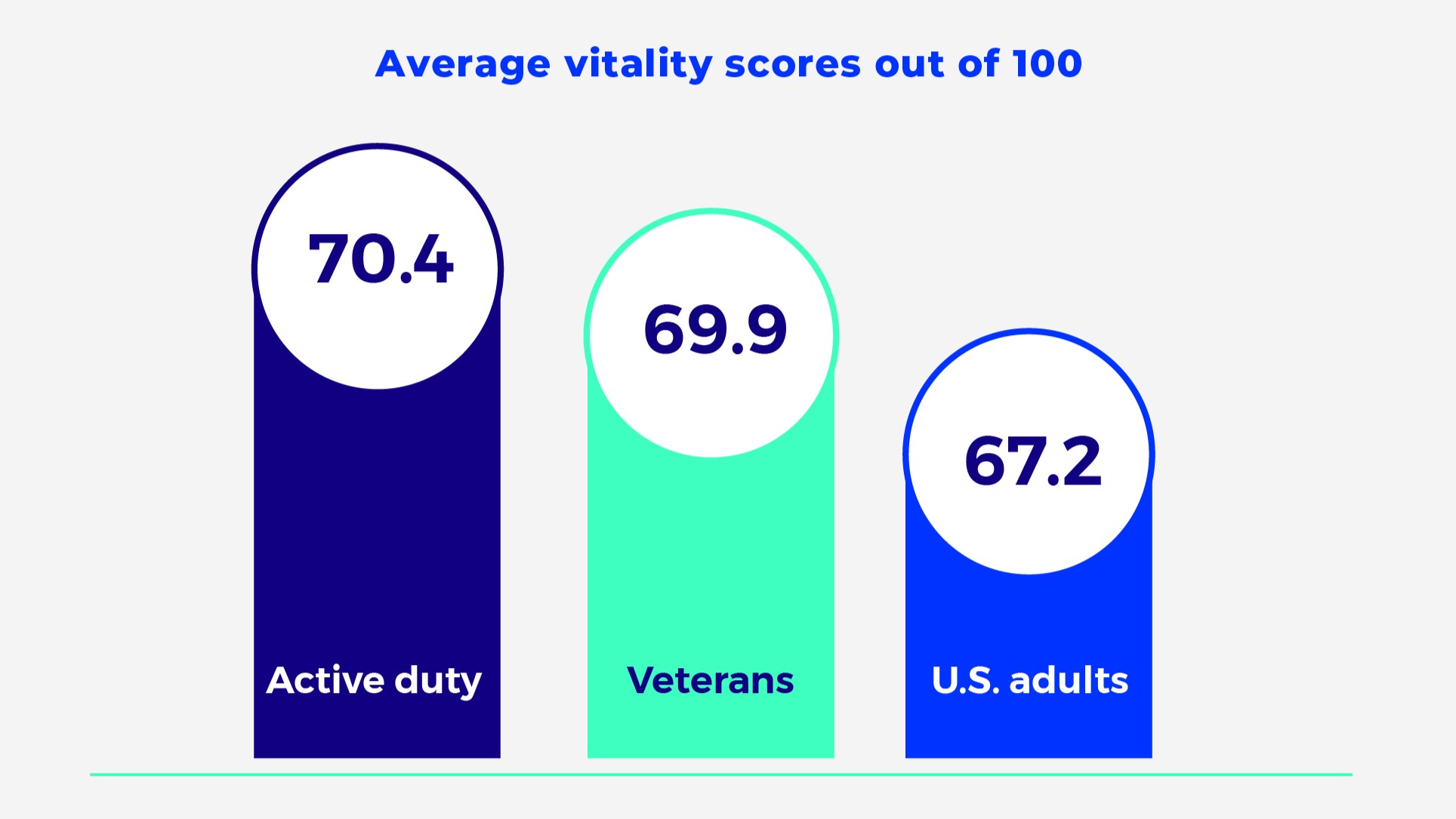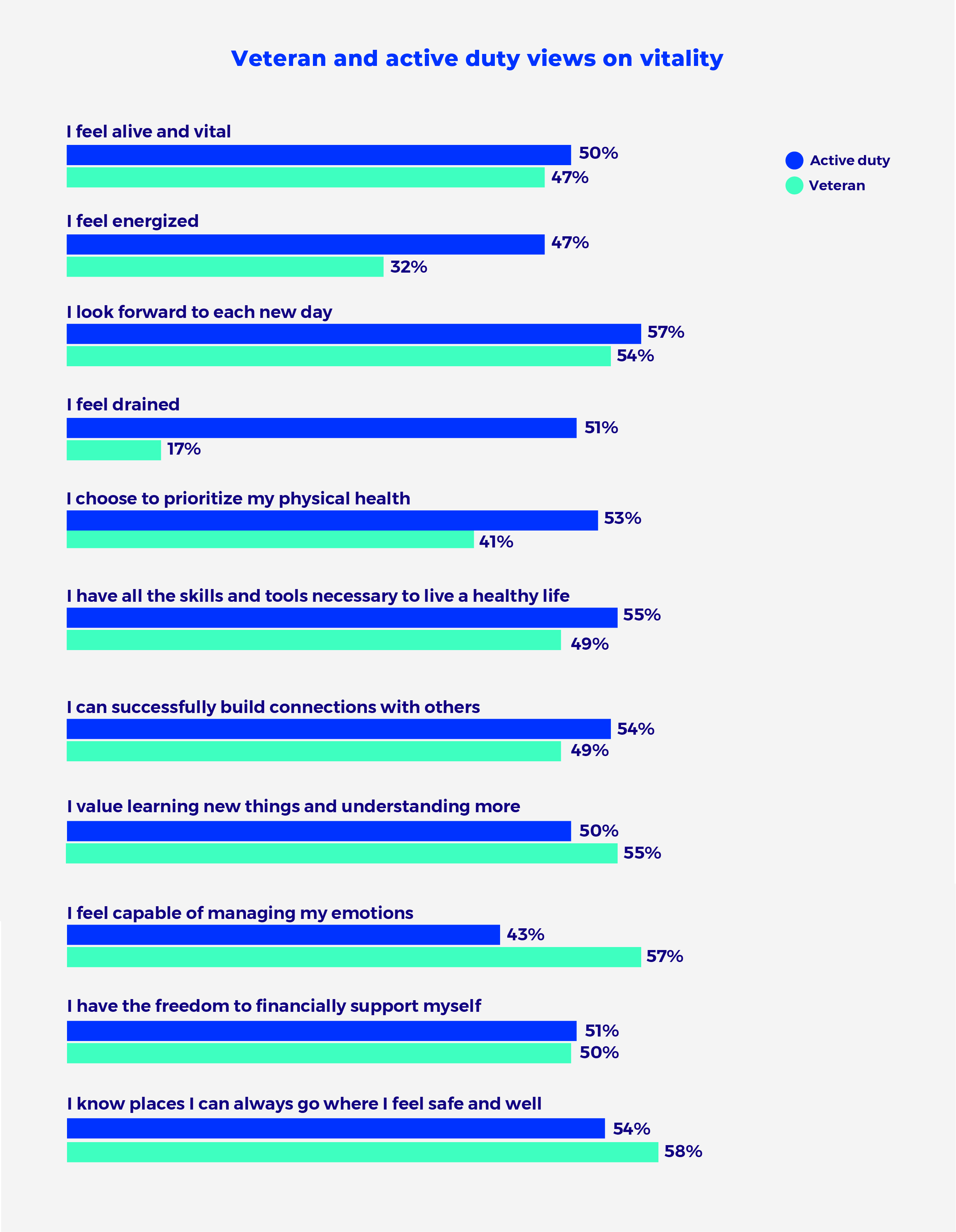
Despite the challenges facing many veterans and members of the military – post-traumatic stress disorder (PTSD), injuries, poor mental health, and more – these cohorts of individuals are living their lives with greater vitality than the general population in the United States.

That’s a key finding in The Cigna Group’s Vitality in America 2023 report, based on a survey of 10,000 adults fielded by Morning Consult in June 2023. We’re also seeing that more veterans reported high vitality in 2023 than they did in last year’s study, and their overall vitality scores are trending upward, from an average of 69.1 in 2022 to 69.9 in 2023.

Veterans are most stressed about finances and housing
The top three stressors for veterans are finances, health, and housing, which are similar to what we saw in the general population. On the financial side, 31% of veterans say their income does not quite cover their living expenses (vs. 40% of all U.S. adults). This is exacerbated among younger veterans. About half of veterans under age 65 (46%) say their income does not cover their living expenses.
Housing is a worry for 18% of veterans of all ages, and 10% reported that a utility company threatened to shut off services in their home within the last three months.
At the same time, just 12% of all veterans fall into the low vitality group. This is higher among younger veterans – 15% of those under 65 classify as low vitality. The research also found that mental health is a significant problem among younger veterans, with 25% describing their mental health as fair or poor, compared to 9% of older veterans. Just 41% of veterans report they prioritize their physical health.
Active-duty members see higher stress than veterans but have higher vitality
Those in active-duty military roles report higher stress than veterans. They’re most stressed about family/social relationships (63%). Those on active duty also report higher levels of loneliness (74% say they feel lonely). That makes sense because being deployed away from home can be difficult, particularly for the 86% of those on active duty who have at least one child under 18.
Yet active-duty members have the highest vitality score among military personnel, and they score higher than the general population (70.4 vs. 67.2). When comparing active-duty military personnel and veterans, we see that those on active duty feel more energized and prioritize their physical health. However, active-duty service members also report higher levels of depletion than veterans, while veterans are more likely to feel capable of managing their emotions.

This year’s research shows that contrary to popular belief, veterans and active-duty service members are capable of living their lives with health, strength, and energy, and in fact they report vitality levels that are higher than the average American. They are living with some of the same stressors that many in the general population deal with daily, but their experience in the military and in life has taught them resilience. Forty-seven percent of veterans and 61% of active-duty military personnel report high resilience. Younger veterans and younger adults serving in active duty – who struggle most with their mental health – could benefit from programs and resources designed to help them manage and improve their mental and emotional health.

Vitality in America 2023
Take a closer look at this year’s Vitality in America study, and learn how individuals can improve their health, well-being, and vitality, as well as how employers can help their workforces do the same.